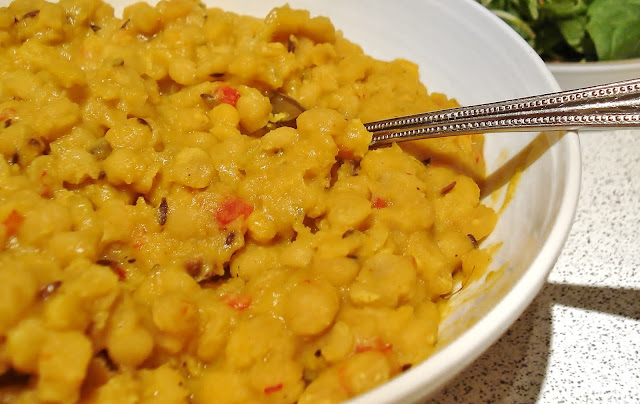Turmeric is believed to be one of the world's greatest natural healers and references to the spice can be found in the ancient Hindu scripture, Atharva-Veda. A principle spice in Ayurvedic medicine, turmeric was also considered to be a valued ingredient in traditional Chinese medicine from about 700 A.D.
Associated with prosperity and fertility in India, the bride-to-be and her groom are painted with a turmeric paste as part of the traditional wedding rituals and, used as a vegetable dye, turmeric gave its colour to the bright golden orange robes of Buddhist monks. And did you know that a spoonful of turmeric added to the water in water-cooled radiators will stop leaks?
Part of the ginger family, turmeric (Curcuma longa Zingiberaceae) is a robust, bright, deep yellow rhizome similar in size and form to ginger. It has a peppery aroma and it's warm musky flavour has a slightly bitter after-taste. India is the world's major producer of turmeric. It doesn't tolerate temperatures below 18° C and is most suited to a tropical climate. So if you decided to try cultivating it in a colder climate, you would have to grow it indoors.
Medicinal Uses
The herb contains many health benefiting essential oils but it is Curcumin, the yellow pigment of turmeric, that is thought to be the power behind the spice's medicinal success. It has both antioxidant and anti-inflammatory properties. In fact, in clinical trials, it has been proved comparable to hydrocortisone but without the toxic side-effects. The conditions it has been used to treat include :
- Crohn's Disease
- ulcerative colitis
- rheumatoid arthritis
- cancer
- high cholesterol
- indigestion
- Alzheimer's Disease
- cystic fibrosis
- multiple sclerosis
- poor liver function
- gum inflammation
Be careful, however, not to take turmeric in more than culinary doses when breast feeding or pregnant OR if you suffer from gall stones or bile duct blockages.
Nutritional Benefits
The most important active ingredient in turmeric is Curcumin. However, this golden spice is also a good source of :
Dhal GF SCD
300g yellow split peas soaked overnight or chana dal (not SCD)
1.25l water (5 cups)
1 large onion
2 cloves garlic
½ fresh red chilli
2 tsps cumin seeds
½ tsp turmeric
2 or 3 thin slices fresh ginger
1-2 tblsps extra virgin olive oil
sea salt and freshly ground black pepper
- manganese
- iron
- vitamin B6
- potassium
- vitamin C
and contains trace amounts of :
- vitamin E
- vitamin K
- thiamin
- riboflavin
- niacin
- folate
- calcium
- magnesium
- zinc
- copper
Cooking with Turmeric
If you can get hold of fresh turmeric, choose plump and clean rhizomes. I've never actually seen fresh turmeric. Used fresh or dried and ground, turmeric adds a vivid yellow colour to food. It is used in curries, curry powders and pastes, pickles (piccalilli), chutneys, vegetable rice and lentil dishes. Recipes on my blog which use turmeric are SCD onion Bhajis, Onion Bhajis and Cauliflower Pakoras, Falafel Burgers and Vegetarian Paella.
300g yellow split peas soaked overnight or chana dal (not SCD)
1.25l water (5 cups)
1 large onion
2 cloves garlic
½ fresh red chilli
2 tsps cumin seeds
½ tsp turmeric
2 or 3 thin slices fresh ginger
1-2 tblsps extra virgin olive oil
sea salt and freshly ground black pepper
- Sift through the yellow split peas and remove any grit, cover them in plenty of water and soak overnight. If you are using chana dal, it doesn't always need soaking so follow the instructions on the packet.
- Drain and rinse thoroughly then pour into a heavy based pan. Add the water and bring to the boil. Boil rapidly for ten minutes, this releases the gaseous chemicals. Using a spoon skim the foam from the water.
- Turn down the light and cook for a further 20 to 30 minutes or until soft.
- Thinly slice the ginger.
- Chop the onions, crush the garlic and finely chop the chilli.
- Meanwhile heat the oil in a thick based pan over a medium heat. When the oil is hot, add the cumin seeds, fry for a few seconds then turn down the heat and add the garlic, onions and ginger.
- Tip in the turmeric and chopped chilli and cook gently until soft.
- When the split peas or chana dal is cooked and the water absorbed, pour the spice and onion mixture into the pan.
- Add salt and freshly ground black pepper to taste. Stir well and serve.



